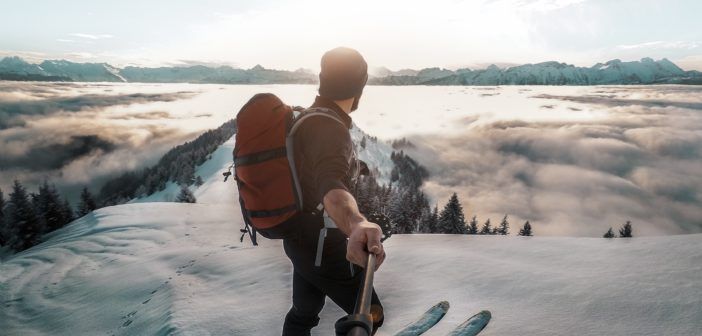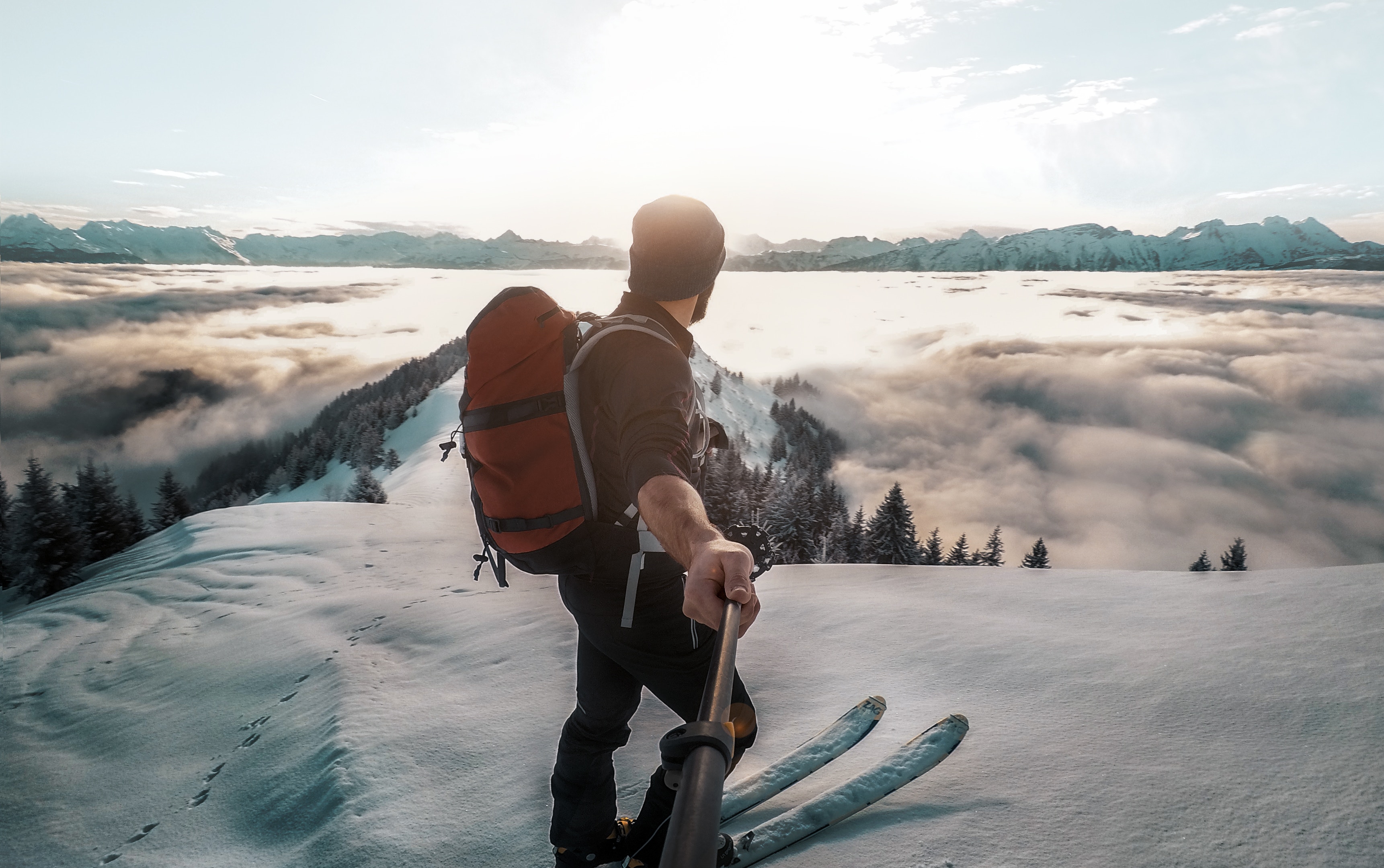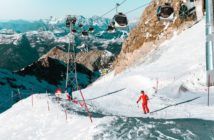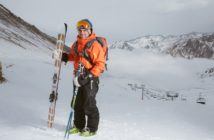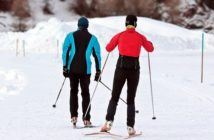Understanding your limits can be an important and humbling lesson for anyone. Few know this better than dedicated athletes.
Even those who constantly push themselves every day understand that their strength was built gradually, rather than all at once.
Knowing the range and scope of your current athletic ability not only gives you a clearer picture of how much room you have to improve, but it can also keep you safe.
Skiers, in particular, should know their abilities – well before hitting a snowy track that is too steep or too challenging for them to properly handle.
But just how can you determine your ski skill level?
Contents
The Importance of Knowing Your Ski Ability
Knowing how well you ski can mean the difference between a fun time and a serious injury. While this may sound like an over-exaggeration, it’s necessary to stay vigilant in this sport.
The National Ski Areas Association (NSAA) reported that approximately 41.5 people a year die while skiing or snowboarding on average, and serious injuries occur at a rate of 44.7% a year.
In the 2011-2012 winter season alone, there were 54 fatalities (39 of which were skiers), and roughly 510 serious injuries (which can include anything from paralysis and head injuries, among other serious damage).
As you can see, these statistics are alarmingly high. You may think no such thing will happen to you… up until you hit a tree or tumble down a slope. Always exercise caution before you decide to tackle a mountain or path you aren’t prepared for!
If you find yourself torn between two different ski levels, it’s best to choose the lower one – just to be on the safe side.
Novice Skiers
Novice skiers are typically young children, or adults who have never skied before or those who can perform certain turns on beginner slopes, but have trouble controlling things like speed or direction.
In other words, novice skiers are those who have little to no skiing experience whatsoever.
If you’re out of practice for multiple seasons or treat it as a rare hobby, it’s easy to fall back into this category even if you existed in higher categories before.
There’s nothing wrong with that! It’s just important to be aware of your abilities.
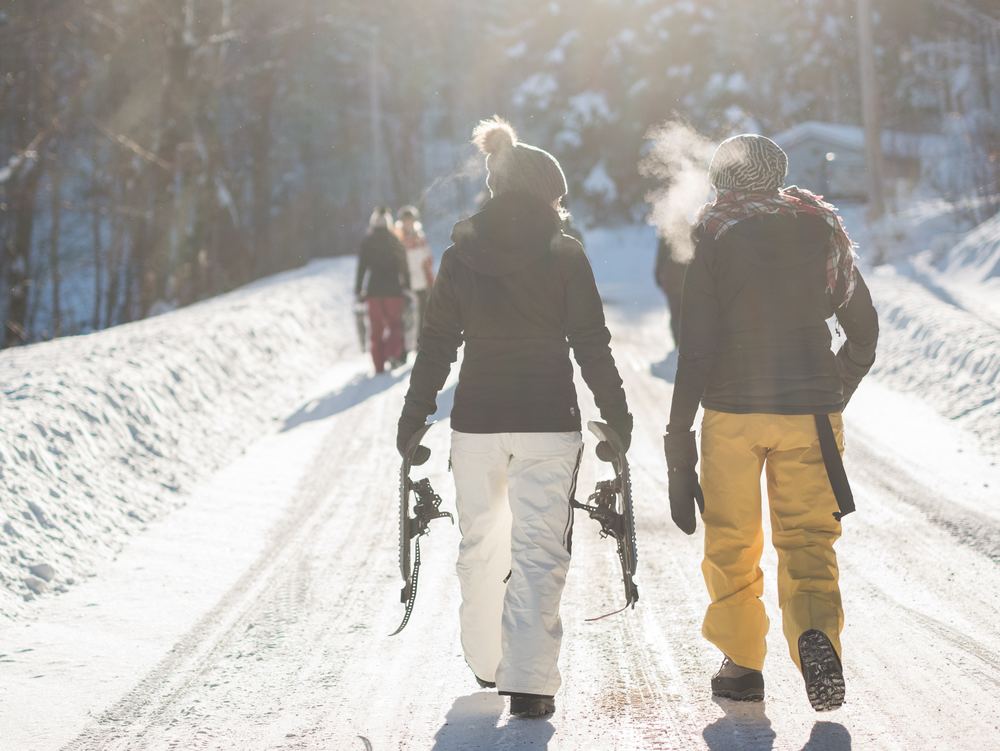
What Slopes Can You Ride?
Typically, novices should take a few lessons from a skiing coach before hitting even the small, gentle slopes.
Skiing may look intuitive at a glance, but this couldn’t be further from the truth. Practicing or being reminded of the basics beforehand can save you from face-planting too many times in the snow, at least.
Once you can prove that you are able to do a snowplow-turn both ways and stop well enough on the initial nursery slopes (and once you feel comfortable enough with the idea), you should begin skiing on “green” terrain.
No, the instructors aren’t going to make you ski on grass. Grassy hills do not make a good ski resort.
For those who are unfamiliar with how ski resorts sort their different slopes, a “green run,” usually indicated by a sign with a green circle in it, is the easiest ski slope available on the resort—outside of the bunny hills and the nursery slopes, of course.
Even though they have a slope gradient of less than 25 percent, some novice skiers may find them a bit tough at first. Just remember to keep at it and you will eventually get the techniques you learned, as well as the general feel of skiing, down in no time!
Who knows, you may even become good enough to move onto some of the easy blue runs given enough practice.
Of course, different resorts may have different definitions of an “easy blue run,” so it’s always wise to thoroughly inspect their ski level chart before taking any runs that may be too difficult for you.
Best Equipment for Novices
Of course, if you’ve never skied before, it can be difficult to know what kind of equipment best suits your needs.
WeLove2Ski.com actually advises novice skiers to hold off on purchasing any new skis, boots, goggles, jackets, and poles, especially on your first-ever skiing trip.
Instead, you should simply rent or hire them out on the resort you plan to visit. This will save you both time and money.
Novice skiers should ask for skis that are light, easy to turn and control, and comfortable on your feet. The beginner rental skis themselves should look pretty narrow, have a soft flex or length and any form of rocker that encourages easy swivel-steering.
Beginner rental skis should also have a huge sweet spot that doesn’t punish your body for doing an incorrect stance on your skis.
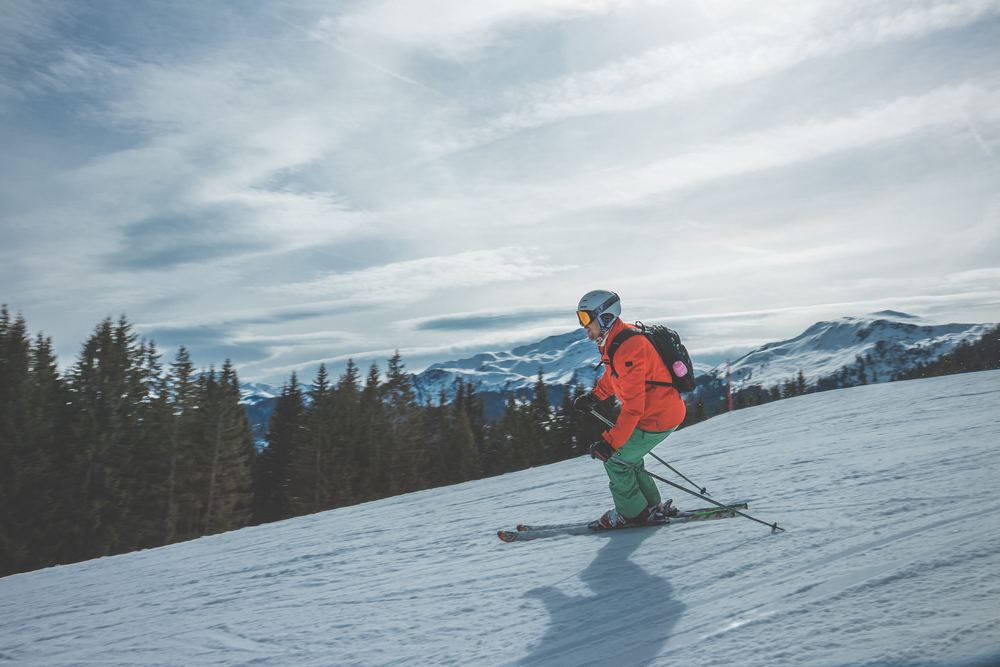
Be sure to research the resort you plan on visiting, so you know what kinds of skiing clothes they are willing to rent you. Buying specialized skiing clothes like ski jackets, ski pants, and goggles of your own can really add up.
The last thing you want is to waste money on clothing that you only really need for an occasional trip, especially when you may be able to rent them for far less.
Best Resorts for Novices
- Park City, Utah.
- Aspen Snowmass, Colorado.
- Vail, Colorado.
- Steamboat Springs, Colorado.
- Sun Peaks, British Columbia.
- Deer Valley Resort, Utah.
Intermediate Ski Skill Levels
If you are confident with your skis on green runs and the easier blue runs, then you may be an intermediate-level skier that’s ready to take on bigger challenges. You might even want to explore easy off-piste or ungroomed terrain around the resort!
Intermediate skiers may still require some assistance from ski instructors for perfecting relatively complicated techniques, such as carving. Otherwise, you remain parallel and only initiate snowplow turns in especially difficult terrain for you.
What Slopes Can You Ride?
Any ski resort’s green- or blue-groomed slopes are the perfect areas for intermediate skiers.
Blue runs will be marked with a sign that has a blue square on it, and they can have a slope of anywhere between 25 to 40 percent. Unfortunately, these runs tend to be the most crowded ones, so plan your trip accordingly.
They are usually flat, though more advanced blue runs may have some challenging bumps on them, too. These bumps along the slope make for an excellent training tool when you are ready to tackle a black diamond slope.
If you want to challenge yourself a little, then try hitting an easy black diamond slope (or red slopes, if you live in Europe) instead of going for your usual blue run.
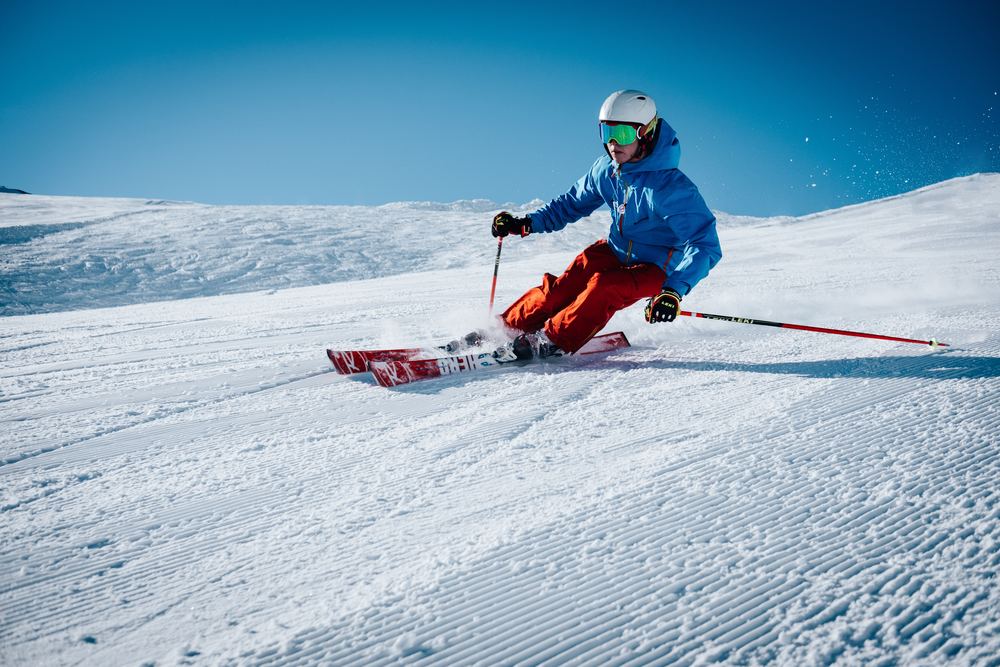
Best Equipment for Intermediate Skiers
Intermediate skiers should have skis that move predictably under their feet. Getting used to new ski equipment all over again will only waste time you could use to ski a blue run or even an easy black diamond run.
This is where your own custom skis really help. A good custom ski will match the flex pattern to your unique weight and strength.
A ski that is too wide will require you to use more strength to hold a consistent edge, whereas a ski that doesn’t fully support your weight will make turns harder on your feet.
You should also invest in custom-fitted boots to allow for even more reliable movement.
Best Resorts for Intermediate Skiers
- Breckenridge, Colorado.
- Corvara, Italy.
- Canazei, Italy.
- Are, Sweden.
- Steamboat Springs, Colorado.
This video shows an example of some maneuvers at the intermediate ski ability level.
Advanced Skiers
If you have skied on a variety of different terrains, including powder, then you are now an advanced skier.
You may find black diamond runs fun rather than intimidating, and you can speedily zip through green- and blue-groomed runs with ease.
However, even advanced skiers may still need some occasional coaching, especially if you tend to fall into bad skiing habits that you know you shouldn’t.
Some coaching can also help you feel more comfortable with the idea of pushing your skiing abilities in moguls and around trees.
What Slopes Can You Ride?
The steeper blue slopes and the single black diamond slopes are ideal for all advanced skiers. These runs will have steep slopes that are over 40 percent. As such, they are very steep and may be full of tough bumps as well.
You have to either be very confident or really skilled to overcome these hurdles. However, a high ski level may help you more in this case.
Best Equipment for Advanced Ski Ability Levels
An advanced skier should look for skis that are both reliable and versatile. That way, you are able to navigate more difficult varieties of terrain with relative ease.
Your skis should have a big sweet spot, so as to allow for more float in soft snow and easy forgiveness around trees. A larger sweet spot can also help you keep your skis under control even at high speeds.
You may also possess the skill and strength to use a wider ski. These wider skis will help you cut through deep powder and crud, but just keep in mind: Wide skis don’t respond as quickly or precisely on firm snow or ice.
You may have to sacrifice a degree of the skis’ versatility to gain reliability, especially if you are just starting out on black diamond slopes.
The right skis for your ski level should remain stable at high speeds, quickly respond in tight terrain, and be reliable to use throughout any technical areas.
Best Resorts for Advanced Skiers
- Big Sky, Montana.
- Squaw, California.
- Telluride, Colorado.
- Revelstoke, British Columbia.
- Jackson Hole, Wyoming.
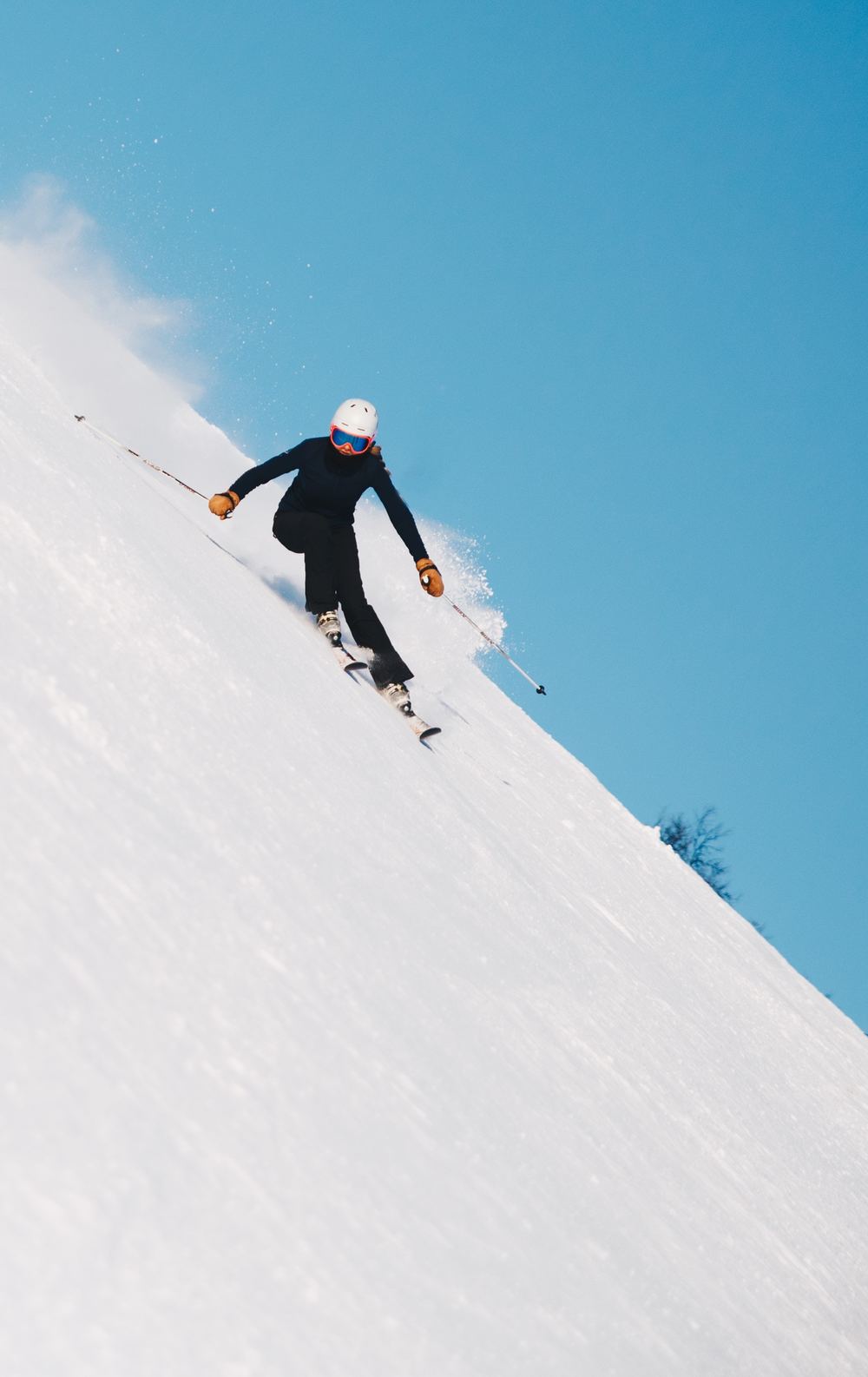
Expert Skiers
Expert skiers are, of course, those who have a sincere passion for skiing and the raw talent to match.
You have skied for years on nearly every kind of terrain, including areas with trees, moguls, powder, choppy snow, ice, and any other challenge that comes your way.
If you are able to adjust your skiing to allow for sudden terrain changes while still in motion, and you can quickly carve down any type of black diamond run, then you are most definitely an expert skier.
What Slopes Can You Ride?
Only the best of the best skiers could ever hope to glide down a double black diamond slope or tough off-piste runs.
These slopes have all sorts of obstacles that are not suitable for any other level of skier. Cliffs and trees are especially common on these types of runs.
Best Equipment for Expert Skiers
Expert skiers should also use versatile and reliable skis.
Again, having a big sweet spot will be crucial, especially because the added control can help you maneuver through some really difficult or steep terrains.
Best Resorts for Expert Skiers
- Sun Valley, Idaho.
- Red Mountain, British Columbia.
- Chamonix, France.
- Zermatt, Switzerland.
- Courchevel, France.
- Val d’Isere, France.
How to Ski Black Runs
Black diamond runs are typically reserved for advanced and expert-level skiers only.
Some intermediate skiers may dare to try the single black diamond run, but, again, it is not recommended that anyone but the expert skiers go on the double black diamond slopes.
That being said, here are a couple of tips you can use to improve your skiing abilities, so as to slide down black runs safely and successfully.
- First of all, you should take an advanced skiing lesson beforehand, so you know what you’re up against. Ski resorts typically offer ski lessons for people of all ski skill levels, so take advantage of that!
- Once you are out on the slope, however, just remember: Don’t lean too far back on your skis. The steeper terrain will try to force you back on them or up the hill.
- Complete slower turns with your uphill arm extended forward. You should be turning with your lower body.
- Always remember to keep your hands and poles in front of you. Constantly swing your arms to help maintain a good balance above your skis.
- Your upper body should always be facing downhill.
- Be patient with yourself!
This video shows an example of a double black diamond ski hill.
Conclusion
Skiing is an exhilarating sport, but it’s always important to know what ski ability level you are currently at.
Before you plunge through a path that is far riskier than you thought, evaluate your skills – and have a good time.
What ski skill levels are you familiar with?

